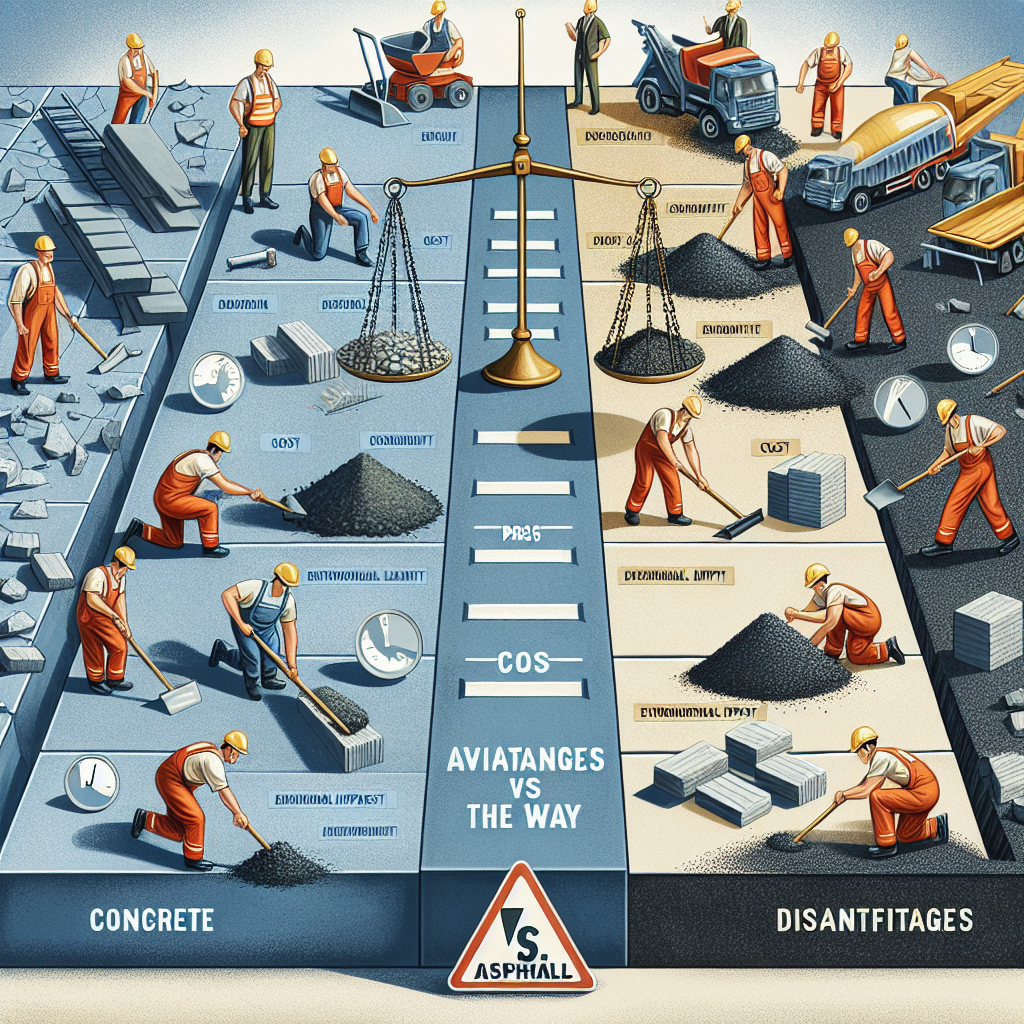When it comes to paving solutions for driveways, parking lots, or roads, two materials often come to the forefront: concrete and asphalt. Both boast unique benefits and downsides, which can significantly affect your choice based on your specific needs. In this article, we will delve deep into the advantages and disadvantages of concrete and asphalt, helping you make an informed decision for your next paving project.
Understanding Concrete and Asphalt
Before we dive into the pros and cons, it’s important to understand what these materials are. Concrete is created from a mix of cement, water, and aggregates, resulting in a solid, durable surface. Asphalt, on the other hand, is made from a mixture of aggregates and bitumen, making it more flexible but less robust when compared to concrete.
Advantages of Concrete
1. Longevity
One of the top reasons many homeowners and businesses choose concrete is its incredible lifespan. When properly maintained, concrete can last anywhere from 25 to 30 years, making it a long-term investment for any property owner.
2. Low Maintenance
Once installed, concrete requires very little maintenance. You’ll mainly need to clean it occasionally and perhaps apply a sealant to protect it from the elements, which can save time and effort down the line.
3. Aesthetic Appeal
Concrete offers a clean and modern look, which many find appealing. It can also be colored, stamped, or textured, allowing for various design options that can enhance the property’s curb appeal.
4. Better for the Environment
Concrete is made from natural materials, making it a more eco-friendly option compared to asphalt, which relies on petroleum products. Additionally, concrete reflects sunlight, thus reducing the heat island effect in urban areas.
Disadvantages of Concrete
1. Higher Initial Cost
The upfront cost of installing concrete can be significantly higher than asphalt. This might deter those with budget constraints, especially for larger projects like parking lots.
2. Longer Installation Time
Concrete takes longer to set compared to asphalt. This means that if you’re looking for a quick paving solution, you might need to plan for some additional time when opting for concrete.
3. Susceptibility to Cracking
Although concrete is known for its durability, it can crack under heavy weight, extreme temperatures, or inadequate installation. Regular maintenance is essential to mitigate this risk.
Advantages of Asphalt
1. Affordability
One of the main selling points for asphalt is its lower initial cost. This makes it a budget-friendly option for residential driveways and commercial parking lots alike.
2. Quick Installation
Asphalt is quick to install and can usually be driven on within a day of laying. If you’re in a rush or need a fast turnaround, asphalt is the way to go.
3. Flexibility and Resilience
Asphalt is more flexible than concrete, allowing it to withstand weight and pressure better without the risk of cracking. This makes it a preferred choice for areas with heavy vehicle traffic.
4. Easier Repairs
In the case of damage, asphalt is generally easier and cheaper to repair. Potholes and cracks can be filled quickly, allowing for a speedy return to usability.
Disadvantages of Asphalt
1. Shorter Lifespan
Asphalt typically lasts around 15 to 20 years, which is significantly shorter than concrete. This increased wear and tear can lead to longer-term costs if continued maintenance or replacement is required.
2. Higher Maintenance Needs
Unlike concrete, asphalt requires regular sealcoating and a watchful eye for cracks and damage to prolong its lifespan. This can add to long-term maintenance costs.
3. Heat Absorption
Asphalt absorbs heat, which can increase urban temperatures and has a negative environmental impact. It can also lead to discomfort in hot weather, especially when children or pets are playing outside.
Making the Right Choice for Your Project
The choice between concrete and asphalt ultimately depends on your specific needs, budget, and aesthetic preferences. If you’re looking for durability and long-term ROI, concrete may be your best bet. On the other hand, if you prefer a cost-effective solution that can be laid quickly and is resilient to heavy use, asphalt could be your ideal material.
Final Thoughts
Choosing the right paving material isn’t merely a matter of preference; it involves assessing your situation to ensure you make an informed decision. Both concrete and asphalt bring their unique strengths and weaknesses to the table, so consider your long-term goals, climate, and vehicle usage before making a selection. By understanding these paving options, you’ll be paving the way for a successful and satisfying investment that enhances both the functionality and beauty of your property.
Frequently Asked Questions (FAQs)
1. Can I use both concrete and asphalt together?
Yes! Some projects integrate both materials, using asphalt for areas that require flexibility and concrete for high-traffic surfaces needing durability.
2. Is concrete better for colder climates?
Yes, concrete can perform well in cold climates, especially when mixed with additives that enhance its frost resistance.
3. How often should I maintain asphalt?
A sealcoating is generally recommended every 2-3 years to prolong its lifespan and prevent damage.
By taking the time to weigh your options and consider the factors that matter most to you, you’re sure to find the perfect paving solution for your needs.


